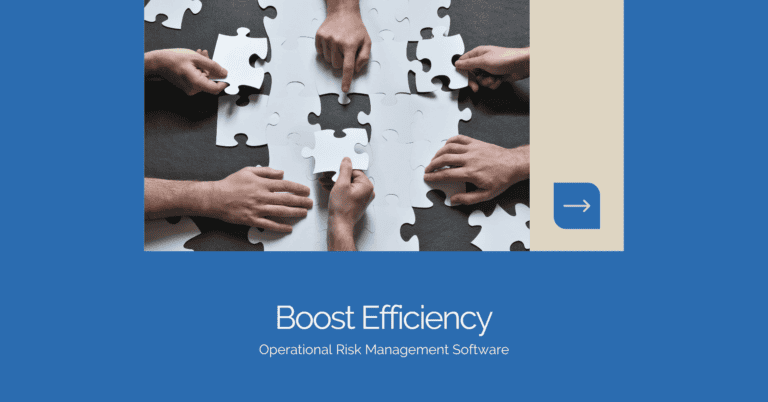Why is risk management important?
What is risk management?
How do you do risk management?
These are all questions that any business will have to ask during a company’s lifecycle. Therefore, it’s essential to have an answer prepared ahead of time!
This article will examine the importance of risk management and ways to begin your risk management process.
What is Risk Management?
Risk management principles help everyone understand, control, and mitigate risks.
These rules help us navigate life’s uncertainties and determine if any potential outcome will benefit or harm our goals.
At its core, risk management principles are designed to keep organisations on track.
Despite many people’s beliefs, everything in life is subject to potential risk—even seemingly unrelated things like nutrition and finances. Everyone can benefit from learning more about a well-rounded set of universal risk management principles.
Risk Management Definition
Risk management isn’t something that can be defined in a few short sentences.
There are many risk management principles and meanings behind them. Still, it’s an organised way of thinking about possible risks and planning against their likelihood and impact.
Understanding risk management principles is important because your goals always involve risk exposure. Organising those known risks into manageable parts allows you to create a strategy for protecting yourself from threats or opportunities.
By considering possible internal and external risks before they occur, you might avoid them altogether or reduce or increase the probability and potential impact of something happening.
Even if your actions lead to a potential problem, having an established system will help you recover without getting discouraged or giving up entirely.
What are the Fundamentals of Risk Management?
Risk identification, risk assessment, risk control, mitigation, and contingency planning are all terms in a typical company’s risk management vocabulary.
They’re also core components of every effective method for dealing with risks big and small. If you read the FAQs, you’ll get an overview of each principle and its application. You’ll learn how to identify risks (and how not to) and what actions to take once you do.
Most importantly, we hope you can begin implementing your plans by learning about risk management basics, whether assessing your finances as an individual or building a solid business from scratch with new partners.
Get Started with Risk Management
You’re serious about managing your business and have decided to take action to control and mitigate its risks.
In that case, you need to take a good, hard look at what risk management means. Risk management isn’t just some new fad; it’s something responsible companies have been practising for decades. Think of it as an umbrella term for protecting against any possible downside in your business.
Some of these risks might seem to appear suddenly. But others can be anticipated, planned for, and even managed by business leaders who know how to do things right.

Create a Formal Risk Management Process
A formalised, effective risk management process ensures that you always make intelligent decisions based on what matters most to your business and where you see your risks and liabilities.
This process can be as simple or complex as you need it to be. At its most basic, a formal risk management process should include defining clear goals and expectations, identifying potential risks and their likelihood of occurring, evaluating these potential risks against your organisation’s tolerance (risk appetite) for them, determining cost-effective control measures and risk mitigation strategies to manage risks and educating everyone involved in how best to deal with each.
Get Everyone Involved
Risk management often involves talking to many different people. For example, you may need client approval before developing a new service or check in with your insurance broker before taking a trip.
However, who needs to be involved depends on the risks you manage. In general, you’ll want to include anyone with a stake in your company or product – a stakeholder can be individuals or groups. Most will appreciate being included since it gives them a more significant overview of the future and peace of mind about what’s going on behind the scenes. It also means that they know where everything stands as much as you do – so there are no surprises for anyone if things go wrong.
Types of Risk Management
There are several kinds of operational risks you should consider when managing a business.
Two types of risks are often combined to create a potentially disastrous result. Therefore, it’s good to be aware of everything and know how to avoid harming your goals.
Some common types of risks include:
- Financial
- Performance
- Schedule
- Health
- Safety
- Environmental
Although they may not seem to have anything in common at first glance, each kind can be involved if you aren’t prepared or if unexpected events occur. To truly understand risk management and how it fits into business operations, it pays to know what risks could be affected by internal and external events.
Why Risk Management is Important
Risk management is an essential function for any company or individual. Risk management is managing risks that can significantly impact your operations and success. The most basic risk management strategy and principles are applicable at all levels, from small businesses to multinational corporations.
While you should take care of your employees and create a positive work environment, it’s also wise to remember that your employer has a duty of care toward you. You do not want to end up out of pocket because something unexpected happened in the workplace. Therefore, risk management becomes critical as part of business development.
Risk Control and Mitigation
Risk management control and mitigation strategies are used to manage organisational risks. At its simplest, a risk is a threat or opportunity for an organisation. Risk management activities help organisations grow or protect their assets and resources from damage or loss due to factors related to business operations.
These factors include employee behaviour, customer demands, suppliers’ actions, and natural and manufactured disasters such as floods and fires.
Risk management methods often involve:
- Risk avoidance by elimination
- Acceptance of the risk
- Risk reduction – Controlling the likelihood of the risk happening and mitigating it to reduce the impact
- Transfer the risk, e.g., using insurance
Contingency Planning
One of many risk management principles, contingency planning, comes into play once you’ve assessed risk impact and likelihoods.
In other words, how will you handle any potential mishaps if you attempt a risky task, e.g., skydiving? Your contingency plan might include instructions on calling emergency services if something goes wrong during your jump or what to do with your main chute failing to work.
A risk-based contingency plan doesn’t eliminate danger but enables you to prepare for things that may go wrong.
Conclusion
Risk management principles play a crucial role in ensuring the success of an organisation by navigating uncertainties. Risk management is a systematic approach that assesses potential risks and plans for their impacts. It creates strategies to protect against threats or capitalise on opportunities. This includes identifying, assessing, controlling, mitigating, and planning for risks.
Implementing a formalised risk management process adapted to individual financial assessments or business development is highly recommended. This involves setting clear goals, identifying potential risks, evaluating them against the organisation’s risk tolerance, implementing cost-effective control measures, and educating stakeholders on risk management strategies.
It’s crucial to involve all relevant parties, including stakeholders, in the risk management process to ensure a comprehensive understanding of potential risks. Distinct risks, such as financial, performance, schedule, health, safety, and environmental risks, should be explored, focusing on preparing for internal and external events.
The critical role of risk management for both businesses and individuals in managing risks that could significantly impact operations and success is highlighted. Risk control and mitigation strategies should be adopted, including risk avoidance, acceptance, reduction, and transfer.
Contingency planning, a pivotal risk management principle, is emphasised for individuals and organisations to prepare for potential mishaps or unforeseen events.
In conclusion, a proactive and comprehensive approach to risk management is necessary to safeguard against potential downsides and capitalise on opportunities.






